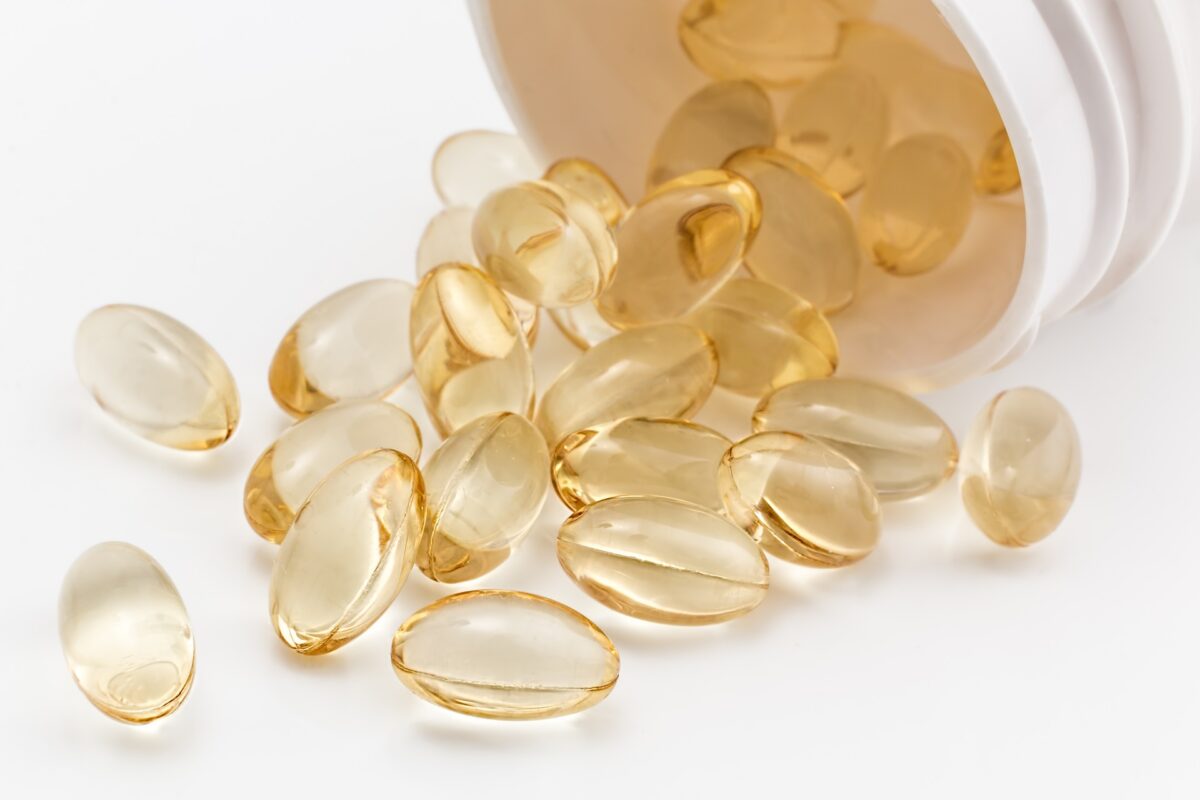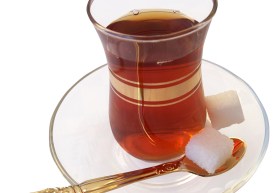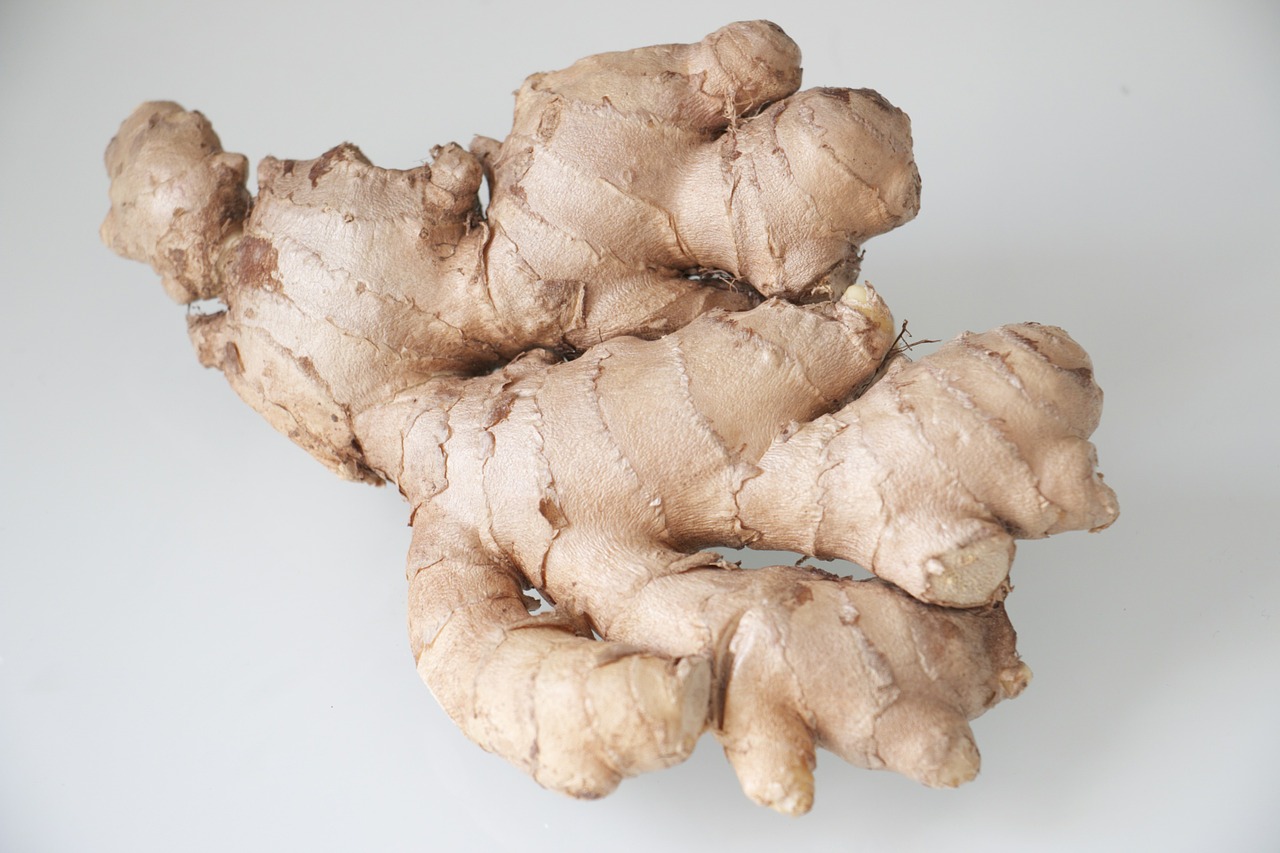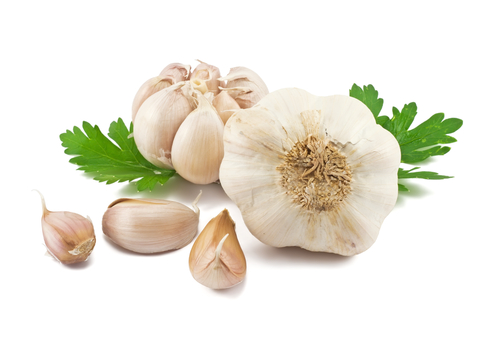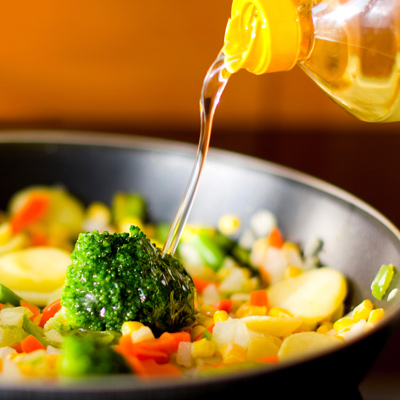“Let food be thy medicine, and let medicine be thy food”; a famous quote from the Classical Grecian physician Hippocrates. Lions Mane mushrooms are a perfect embodiment of this philosophy; as delicious as it is therapeutic.
Lions mane (Hericium Erinaceus) is a white clumpy mushroom with long dangling spines that tends to grow in late summer/early fall on hardwoods.
I was first introduced to Lion’s Mane a few years ago when I had a few patients tell me they were using an extract of the mushroom to help with memory. Supplements that enhance brain activity, AKA Nootropics, have always tweaked my interest as one of my areas of clinical focus is in neurology. At first I thought that maybe this is the newest “superfood fad” but once I began to investigate the research on this mushroom my opinion quickly changed.
It was clear that Lions Mane had some legitimate therapeutic value in inflammation, the immune system, psychiatric conditions, cognitive enhancement, diabetes, heart disease, bowel disease and cancer.
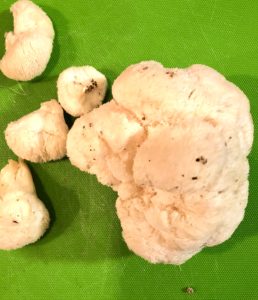
Inflammation and Depression
A 2012 study demonstrated that Lions Mane mushroom contains several compounds that have moderate to high levels of antioxidant capacity. This translates into an anti-inflammatory effect in the body. A 2015 study demonstrated that participants who consumed Lions Mane had less depressive symptoms and improvements in blo-markers of depression which was attributed to it’s anti-inflammatory effects. Another study demonstrated that Lions Mane can enhance immune function possibly by reducing inflammation and oxidative stress.
Immune
Not only does Lions Mane help boost immune function by reducing oxidative stress, it also seems to benefit intestinal immune function. A study on mice revealed that some of the proteins in the mushroom help encourage the growth of beneficial bacteria in the gut.

Memory
Cognitive enhancement is the main reason that I see people taking this mushroom. It is possible that it does have some cognitive enhancement properties but all the research so far has been done on animals. One such study found that mice given a lion’s mane supplement had better object recognition and recognition memory. Other research suggests that Lions Mane may have the potential to prevent or treat conditions of cognitive decline like Alzheimer’s and Parkinson’s disease.

Heart Health
Research on rats has demonstrated that Lions Mane may have cholesterol lowering effects and blood pressure lowering effects. Compounds in Lions Mane may help in the production of Nitric Oxide, which helps keep blood vessels relaxed.
Cancer
The antioxidant properties of Lions Mane may contribute to some anti-cancer effects seen in rat and in vitro studies. One in vitro study indicated that Lions Mane has activity against human leukemia cells. Another study showed that in mice, Lions Mane has activity against Liver, Colon and Gastric cancer cells.
Diabetes
After 4 weeks of Lions Mane supplementation, rats with diabetes had lower blood sugar levels than those who did not receive the mushroom. Diabetes can often result in life altering nerve damage. A 2015 study showed that diabetic rats given an extract of Lions Mane had reduced nerve pain and improved antioxidant activity after 6 weeks.

Digestive Health
I previously discussed how Lions mane can have anti-inflammatory effect of the digestive tract, as well as benefitting the growth of “good” intestinal bacteria. Another study demonstrated that Lions Mane has some interesting antimicrobial effects. Notably, Lions Mane seems to inhibit the growth of H-pylori, a bacteria responsible for close to 80% of stomach ulcers.
Nerve Repair
One of the most fascinating health benefits of Lions Mane came out of a rat study. Rats with nerve damage who were given daily extracts of Lions mane had quicker nerve cell regeneration than those who did not.
Culinary
Up until a few weeks ago I thought Lions Mane was an exotic mushroom that was only used therapeutically as a supplement. Recently, I found myself in a local Farmers Market and low and behold a mushroom farmer was selling fresh Lions Mane; I was amazed! I asked the farmer “how do I prepare this”? He told me to cut the mushroom in ½ inch slices and in a hot pan with butter, sear both sides. So, I bought some and followed his advice, and discovered that Lions Mane is absolutely delicious! It is now one of my favorite cooking mushrooms and I have since heard from many foodies and chefs that it is one of their favorites too. So let food be thy medicine everyone, and cook up some Lions Mane this fall!
Citations
Leonard, Jayne. “What are the benefits of lion’s mane mushrooms?.” Medical News Today. MediLexicon, Intl., 22 Oct. 2018. Web.
30 Oct. 2019. <https://www.medicalnewstoday.com/articles/323400.php>
Leonard, J. (2018, October 22). “What are the benefits of lion’s mane mushrooms?.” Medical News Today. Retrieved from
https://www.medicalnewstoday.com/articles/323400.php.
| Lion’s Mane Mushroom, <i>Hericium erinaceus</i> (Bull.: Fr.) Pers. Suppresses H<sub>2</sub>O<sub>2</sub>-Induced Oxidative Damage and LPS-Induced Inflammation in HT22 Hippocampal Neurons and BV2 Microglia. |
| Kushairi N, Phan CW, Sabaratnam V, David P, Naidu M. |
| Antioxidants (Basel). 2019 Aug 1;8(8). pii: E261. doi: 10.3390/antiox8080261. |
| PMID: 31374912 [PubMed] Free Article |
| Thirteen-Week Oral Toxicity Evaluation of Erinacine AEnriched Lion’s Mane Medicinal Mushroom, Hericium erinaceus (Agaricomycetes), Mycelia in Sprague-Dawley Rats. |
| Lee LY, Li IC, Chen WP, Tsai YT, Chen CC, Tung KC. |
| Int J Med Mushrooms. 2019;21(4):401-411. doi: 10.1615/IntJMedMushrooms.2019030320. |
| PMID: 31002635 [PubMed – indexed for MEDLINE] |
| In Vitro and In Vivo Inhibition of Helicobacter pylori by Ethanolic Extracts of Lion’s Mane Medicinal Mushroom, Hericium erinaceus (Agaricomycetes). |
| Wang G, Zhang X, Maier SE, Zhang L, Maier RJ. |
| Int J Med Mushrooms. 2019;21(1):1-11. doi: 10.1615/IntJMedMushrooms.2018029487. |
| PMID: 30806251 [PubMed – indexed for MEDLINE] |
| Dietary Supplementation of Lion’s Mane Medicinal Mushroom, Hericium erinaceus (Agaricomycetes), and Spatial Memory in Wild-Type Mice. |
| Rossi P, Cesaroni V, Brandalise F, Occhinegro A, Ratto D, Perrucci F, Lanaia V, Girometta C, Orrù G, Savino E. |
| Int J Med Mushrooms. 2018;20(5):485-494. doi: 10.1615/IntJMedMushrooms.2018026241. |
| PMID: 29953363 [PubMed – indexed for MEDLINE] |
| A Polysaccharide Isolated from Mycelia of the Lion’s Mane Medicinal Mushroom Hericium erinaceus (Agaricomycetes) Induced Apoptosis in Precancerous Human Gastric Cells. |
| Wang M, Zhang Y, Xiao X, Xu D, Gao Y, Gao Q. |
| Int J Med Mushrooms. 2017;19(12):1053-1060. doi: 10.1615/IntJMedMushrooms.2017024975. |
| PMID: 29431066 [PubMed – indexed for MEDLINE] |
| Anti-Inflammatory Effects of Ethanol Extract of Lion’s Mane Medicinal Mushroom, Hericium erinaceus (Agaricomycetes), in Mice with Ulcerative Colitis. |
| Qin M, Geng Y, Lu Z, Xu H, Shi JS, Xu X, Xu ZH. |
| Int J Med Mushrooms. 2016;18(3):227-34. doi: 10.1615/IntJMedMushrooms.v18.i3.50. |
| PMID: 27481156 [PubMed – indexed for MEDLINE] |
A Naturopathic Doctor can play an important role in managing CMT through dietary counseling, specialized testing and by offering relevant integrative therapies.
CMT is a hereditary disorder affecting the motor and sensory nerves. It’s characterized by progressive loss of muscle tissue and sensation in various parts of the body. Currently CMT is incurable and is the most common inherited neurological disorder and affects approximately 1 in 2,500 people.
In terms of managing CMT, by far the most important goal is to maintain movement, muscle strength and flexibility. Often overlooked is the role diet, pain management and antispasmodics can play in CMT. Having a naturopathic doctor familiar with neurological conditions can be a valuable part of a healthcare team.
Sugar
Although sugar is sweet and delicious, at high concentrations it can become a poison for the nervous system. Uncontrolled blood sugar, including diabetes, will exacerbate nerve damage and peripheral neuropathy in CMT. A naturopathic doctor can test blood sugar in order to determine if it poses a risk. Dietary counseling, such as education around glycemic index and glycemic load, can help balance blood sugar levels. There are also effective strategies that can boost insulin sensitivity thus lowering blood sugar. These include; low impact exercise and supplements like chromium, berberine, agaricus mushroom, american ginseng, and vitamin B3.
Diet
A diet rich in antioxidants and anti-inflammatory compounds can greatly improve neuromotor and locomotor performance. Curcumin and vitamin C are two natural compounds that have been and are currently being investigated as potential therapeutic agents for CMT. One study demonstrated a decrease in neuron death and an increase in size and number of nerve sheath cells after administration of curcumin. Intermittent fasting is a diet strategy that promotes a 16 hour fasting period each day and has been shown to improve locomotor functioning in CMT patients after 5-months.
Nerve Pain
Nerve pain and neuropathy can be addressed through a few different approaches. Application of topical counterirritants such as capsaicin and menthol can work by overriding pain signals. Peripheral pain blockers work by re-routing pain signals locally at the source of the pain. Effective peripheral pain blockers include: acupuncture, electro-acupuncture, moxabustion and transcutaneous electrical nerve stimulation (TENS). Central pain blockers block or override pain signals where they are interpreted, in the brain. Central pain blockers include cannabis, wild lettuce and california poppy.
Cramps and Spasms
There are many effective integrative therapies for cramps and muscle spasms. These therapies work by balancing electrical conduction at the muscle and stimulating inhibitory neurotransmitters. Some of the most effective therapies are: magnesium, acupuncture, GABA, valerian, cramp bark, skullcap, passionflower and cannabis.
Nerve-Protection
One of the largest areas a naturopathic doctor can serve as a crucial part of the integrative healthcare team is in offering strategies to prevent further nerve damage, and in some cases reversing existing nerve damage. Neuroprotectants generally belong to two main categories: antioxidants and anti-inflammatories. Neuroprotectant antioxidants include: alpha lipoic acid, glutathione, resveratrol, EGCG, flavonoids, Co-Q10, CBD and THC. Anti-inflammatory strategies include testing for food sensitivities, hormone levels and environmental toxins. Anti-inflammatory supplements include Omega 3 fatty acids, curcumin, boswelia, and CBD.
Like a fine wine, Pu-erh is a variety of tea that is often better with age. Pu-erh is a post-fermentation tea, typically produced in the Yunnan province of China. The tea derives its name from Pu-er county in Yunnan, where trading of this fermented tea took place during imperial China. Pu-erh tea begins it’s life much like green tea but undergoes the process of pressing (compacting the tea into round or brick-like shapes) and then fermentation. Raw Pu-erh has not been artificially fermented and therefore must be aged for several years allowing bacteria and fungi to slowly act of the tea leaf breaking down and transmuting many of the compounds and enzymes in the tea. Ripened Pu-erh is a relatively recent invention where the tea leaf undergoes special processing to mimic aged Raw Pu-erh. Moisture, heat and rotation are some of the conditions employed on the tea in order to accelerate the process of fermentation. A good Pu-erh requires the right amount of aging and the right strains of bacteria and fungi for fermentation. The taste is distinctively earthy with many subtleties.
Much like wine, Pu-erh tea ranges in its quality and vintage. Pu-erh can range from 3-months to 100 years old. Most enthusiasts will agree that the very young or the very old Pu-erh is the best, the middle years are sometimes referred to as “awkward”. Usually a raw Pu-erh will start to develop it’s mature taste after 5 years of aging. Buying Pu-erh can be difficult for the westerner as most authentic Pu-erh (must come from Yunnan to be considered authentic Pu-erh) has little to no english on the package. The best way to ensure that you are getting the quality you’re interested in is to develop a relationship with a tea distributer or manufacturer who is knowledgeable on the subject. There is a Pu-erh out there for every palate and every pocketbook.
Pu-erh tea has been a favourite of monks and is a common ingredient of many health promoting elixirs in China. The fermentation process endows this tea with slightly different compounds than green or black tea and therefore deserves its own scientific investigation. When tea undergoes fermentation, such as is the case with Pu-erh, some health promoting compounds are lost (such as catechin antioxidants); however, others are gained. Recent research has revealed that the concentration of gallic acid (an anti-microbial), a compound called theabrownin, various polysaccharides and enzymes are increased in fermented tea.
Scientific studies performed in the last decade have demonstrated Pu-erh tea to have antimicrobial, fat busting and cholesterol reducing properties. The Journal of Agricultural Food Chemistry published a study demonstrating that a Pu-erh tea extract (PTE) had an antiviral effect on hepatitis B virus (HBV). The PTE had the ability to suppress the replication of virus DNA, while also exerting antioxidant effects inside cells affected by the virus. The researchers could not pinpoint the exact components that made PTE effective but conclude that it is likely due to a combination of compounds working together. The importance of this study is enhanced due to a small amount of substances currently available to treat HBV.
The journal Nutrition Research published a research paper in June of 2011 investigating the weight reducing effects of Pu-erh tea extract. 36 pre-obese Japanese adults were followed in a 12-week double blinded placebo controlled comparison study. The subjects ingested a barley tea with or without PTE (333mg) before each of three daily meals. The group taking PTE had a reduction in weight and body mass index (BMI) compared to the placebo group. The reductions in weight and body mass were only evident after 8-weeks on the PTE. Computed tomography demonstrated the the PTE group had a significant reduction in visceral fat after 12 weeks. There were no adverse reactions in the PTE treated group. The authors speculate that the weight reducing properties of PTE may be due to the high gallic acid content since prior research has demonstrated gallic acid to have anti-obese effects in animals.
Theabrownin (TB) is another compound found exclusively in Pu-erh tea that has recently been shown to have cholesterol and fat lowering properties. A study in 2010 demonstrated that increases in triglycerides, total cholesterol, LDL cholesterol and decreases in HDL cholesterol (also known as good cholesterol) were prevented in rats who were fed a high fat diet and supplemented with TB versus rats fed a high fat diet with no supplemental TB. The content of cholesterol and bile-acids found in the feces of the rats with supplemental TB was significantly higher than that of those rats with no supplemental TB. This suggests that TB could promote the transformation and excretion of dietary cholesterol. Therefore, TB and Pu-erh tea may be a promising supplement in the treatment of high cholesterol.
For centuries, Pu-erh tea has been touted as a great digestive aid. A scientific study in 2010 investigated the molecular composition of polysaccharides isolated from Pu-erh tea. Due to the fermentation process the content of water soluble polysaccharides was increased as well as the content of digestive enzymes including: cellulase, pectinase, and glucoamylase. In theory these enzymes may aid with the the digestion of certain foods when taken with a meal, thus reducing gas and bloating.
While all tea (Chamellia Sinensis) has health promoting qualities, different ways of preparing tea, endow it with slightly different properties. Recent research suggests that the fermentation process that Pu-erh tea undergoes gives this tea a slightly higher complement of gallic acid, polysaccharides and hydrolase enzymes. These compounds have been demonstrated to be useful in weight reduction, intestinal gas reduction and as an antimicrobial. There are no reported adverse effects with drinking this tea aside from those associated with caffeine intake. If you choose to age Pu-erh yourself, many experts recommend a clay pot (to allow the tea to breathe) and to store in a cool dry place away from other odours (as tea will take on odour it is exposed to). If in a compacted form, the tea can be broken up with a knife “called activating the tea” if stored for short term but should be kept in compacted form if storing for over 5 years. The consumption and collection of Pu-erh can quickly become a healthy hobby.
Pumpkin is a gourd-like squash of the Cucurbitaceae family. The origin of the pumpkin is not definitively known although it is thought to have originated in North America. Pumpkin is a very versatile food; almost every part of the vegetable is edible (shell, seeds, pulp, leaves, flowers). Although the taste and uses of pumpkin as a food may be common knowledge, especially around this time of year, the medicinal properties of pumpkin can often be overlooked.
The color of pumpkin can be attributed to the pigmented carotenoids beta and alpha carotene, the latter of which generates vitamin A in our body. Pumpkin also contains lutein making it an excellent menu choice to maintain eye health. Pumpkin seeds are often roasted and make an excellent snack in the fall and wintertime. Pumpkin seeds have many health benefits, which include a good source of zinc, tryptophan, magnesium, manganese, phosphorous and phytosterols. These nutrients help to promote immune system, cardiovascular, and reproductive health.
Diabetes
There have been several studies over the past decade investigating the effect of extracts of pumpkin on diabetes. One of the most recent studies found that mice who were fed a pumpkin paste concentrate maintained a lower blood sugar level than the control group. The authors were able to isolate two compounds from the pumpkin paste (trigonelline and nicotinic acid) which seem to have an ability to regulate enzymes involved in triglyceride accumulation and the progression of diabetes.
Another study, looked at a major complication of diabetes; kidney damage, and whether pumpkin can be used to prevent its progression. This 2010 study in the journal of Food Chemical Toxicology used a mixture of flax and pumpkin seed in the diets of rats with alloxan-induced diabetes. The flax and pumpkin seed mixture was able to quench free radicals and increase the level of antioxidants in the blood of the diabetic rats. Furthermore, on kidney biopsy, rats fed the seed mixture had less glomerular hypertrophy and tubular dilatation, meaning healthier kidneys.
Prostate
The application for pumpkin seed oil in prostate health has been a popular topic of scientific investigation. A recent double blind placebo controlled trial investigated the efficacy of supplementation of pumpkin seed oil and saw palmetto oil in middle-aged Korean men with benign prostatic hypertrophy (BPH). The trial was performed over 1 year on 47 patients with BPH. The patients received either potato starch (320 mg/day), or pumpkin seed oil (320 mg/day), or saw palmetto oil (320 mg/day) or a mixture of both pumpkin seed and saw palmetto oil (320 mg/day). The groups taking pumpkin seed and saw palmetto oils all saw a decrease in symptoms and an increase in quality of life after 3 months. Serum prostate specific antigen (a laboratory marker of prostate pathology) was reduced in the group taking a mixture of pumpkin and saw palmetto oil after 3 months. Urinary output (which is obstructed in many cases of BPH) improved in both the group taking pumpkin seed oil and the group taking saw palmetto oil at 6 and 12 months respectively. The study concluded by saying that pumpkin seed oil and saw palmetto oil supplementation is clinically safe and may be used as an effective complementary therapy for BPH.
When ripe, pumpkin can be boiled, baked, steamed or roasted. It can be eaten mashed or as a base for soups, purees and pies. I hope that you now see a whole world of possibilities for this incredible orange vegetable. Pumpkins are lonely after Halloween, so take one home and experiment in the kitchen.
Links
Pumpkin may be a good addition to the plate for Diabetes. Be sure to include exercise into any successful type 2 diabetes treatment protocol.
Apple is the fruit from the tree Malus Domestica, a member of the rose family (Rosaceae) which also includes Peaches. The apple tree originated in western asia and was brought to north america in the 17th century.
Thousands of years of cultivation has lead to many varieties of apples differing in texture and taste. I personally enjoy Russet for its sophistication of flavor and Honey Crisp for its crispy sweetness. The wide variety of apples make them a great fruit to enjoy on their own or to prepare into other foods. Apples are now in season, making it a great time to go to a local orchard and experience the taste of a freshly picked apple.
The proverb “an apple a day keeps the doctor away” dates back to 19th century Whales. There are many healthy compounds found in apples, such as: antioxidants, fiber, vitamins and minerals. Recent research has focused on investigating the health benefits of the polyphenols found in apple peel.
A study published in the Journal of Pharmacology in July of 2010 demonstrated that an apple peel polyphenol extract (APPE) protected colorectal cells against the cytotoxic effects associated with consumption of the anti-inflammatory drug indometacin. APPE was shown to have free-radical scavenging ability, preventing mitochondrial (the energy production center of the cell) oxidative damage induced by indometacin.
A study in the Journal of Agricultural Food Chemistry in June 2010 revealed that APPE may have a role to play in the treatment and prevention of H. pylori infection. The study concluded that doses of 150 and 300 mg/kg/day of APPE showed an inhibitory effect on H. Pylori attachment to the stomach lining. Furthermore, APPE also showed an anti-inflammatory effect on H. Pylori associated gastritis.
The same journal contained a study published in May 2010 demonstrating the liver protective effects of apple polyphenols. The study concluded that apple polyphenols had significant effect against acute liver damage induced in mice. The authors speculate that the effect may be due to the free radical scavenging, inhibition of fat oxidation and increased antioxidant activity of apple polyphenols.
In the same month, the same journal published a study demonstrating that apple juice containing apple polyphenols can actually inhibit the activity of toxins produced by staphylococcus. A toxin which effects the intestine known as “staphylococcal enterotoxin A” is a common culprit of gastroenteritis. The apple polyphenols studied here were shown to bind to the enterotoxin rendering it biologically inactive.
In Naturopathic medicine, as with all health care models, safety is never taken for granted; even when dealing with relatively natural substances. It is necessary to seek out, if possible, studies demonstrating the safety profile of a medicinal substance. The Journal of Oleo Science published a study this year evaluating the safety of excessive intake and efficacy of long-term intake of beverages containing apple polyphenols. Subjects were either given a normal dose (340g/day) of apple polyphenols for 12 weeks or three times the normal dose (1020g/day) of apple polyphenols for 4 weeks. There were no adverse reactions noted in either trial. The study also found that the consumption of the apple polyphenols led to a significant reduction in visceral fat area of subjects who were above normal range at baseline, with no change in visceral fat area in subjects in normal range at baseline.
As I have mentioned in previous articles, I especially like studies that evaluate consumption of the whole food over time. The European Journal of Cancer Prevention published a study in January of 2010 that evaluated the effect of regular consumption of apples on colorectal cancer risk in populations with low intake of fruits and vegetables (i.e. most north american populations). The study revealed that while there was more than a 30% reduction in cancer risk with just one apple a day, risk was reduced to around 50% with intake of more than one apple per day. The authors speculate that the beneficial effect may result from the rich content of flavonoid and other polyphenols, which can inhibit cancer onset and cell proliferation.
It seems the old proverb is true, so enjoy your apple, or better yet, more than one apple a day and remember to always have the peel too.
Ginger (Zingiber officinale) has been used as a culinary spice and as medicine for centuries. In Ayurvedic medicine ginger is known as “The Universal Medicine” and forms the basis of countless traditional treatments. In terms of everyday use, ginger is known to prepare the body for digestion and assimilation of nutrients as well as to warm the body during cool winter months. In the last decade, research into the properties of ginger has revealed anti-inflammatory, anti-tumor, anti-nausea and gastrointestinal protective properties.
In relation to ginger’s gastroprotective properties, an aqueous extract of ginger has been shown to prevent stress induced and alcohol induced gastrointestinal ulcers. Ginger was also shown to prevent the growth of harmful H-pylori bacteria.
The anti-nausea properties of ginger have long been known, and ginger can often be found in medications for nausea and vomiting. A recent study in the journal of gynecological oncology demonstrated that randomized control trials have proven that ginger is an effective agent in alleviating post-chemotherapy nausea.
Extensive study into the anti-tumor properties of ginger has been accomplished in the last decade. One study determined that a ginger extract reduces expression of NF-KappaBeta and TumorNecrosisFactor-alpha (compounds which cause inflammation in the body and are up-regulated in cancer) in rats with liver cancer. Another study revealed that [6]-gingerol (one of the compounds that makes ginger pungent) suppresses hepatoma (liver tumor) cell proliferation by inducing cell cycle arrest (stopping cancer cell growth) and apoptosis induction (causing cancer cells to self-destruct). A study looking into the benefits of ginger in ovarian cancer revealed that 6-shogaol (another pungent compound in ginger) inhibited NF-kB (inflammatory compound) as well as diminished secretion of VEGF and IL-8 (compounds secreted by cancer cells to tell the body to form new blood vessels to feed the cancer cells).
Garlic (Allium Sativum) is an ancient therapeutic food that has been in use since the dawn of medicine. It is mentioned in the bible and has been used by all the great forefathers of modern medicine such as: Hippocrates, Galen and Dioscorides. Garlic is mentioned several times in the Ebers Papyrus, an ancient Egyptian medical text written circa 1550 B.C. Garlic was used topically and internally to treat ailments of the respiratory tract, digestive tract and for infection. Men and women would consume large quantities of garlic to prevent illness and improve endurance. Garlic bulbs have even been found buried in the tombs of Egyptian royalty, such as King Tutankhamen. Garlic continues to be one of the most powerful remedies in the modern day alternative health care practitioner’s toolbox. Fortunately, it has worked so well for so many thousands of years that a significant amount of funding has gone into researching the particular constituents contained in Garlic that lend it its medicinal properties.
Research has shown that sulfuric compounds in garlic are effective at lowering blood pressure, lowering LDL cholesterol, exploding certain cancer cells, and killing some strains of harmful bacteria. The following is an overview of some of the most compelling research on Garlic as a medicinal supplement over the past few years.
In ancient times Garlic was viewed as a tonic of the respiratory and digestive tract, however; persuasive evidence based research demonstrates that it is also a tonic for the cardiovascular system. In 2010 a double-blinded randomized placebo-controlled trial was performed on 51 coronary heart disease patients to determine the effect of time-released garlic powder tablets on the risk of heart attack and sudden death. It was demonstrated that after 1 year on the garlic supplement, men had a 1.5-fold reduced risk for serious cardiovascular disease and women had a 1.3-fold reduction in risk. The reduced risk was extrapolated through the finding that men had on average a decrease in LDL-cholesterol by 32.9 mg/dl and women had a 27.3 mg/dl decrease on the garlic supplement.
Besides high LDL-cholesterol, another marker of risk for cardiovascular disease is hypertension. A Meta-analysis that looked at 1994 randomized placebo controlled trials using garlic preparations as intervention for hypertension found that garlic was significantly more effective than placebo. In hypertensive patients garlic preparations produced an average of an 8.4 mmHg drop in systolic blood pressure and a 7.3 mmHg drop in diastolic blood pressure. A research article published in 2007 demonstrated that the polysulfuric compounds in garlic are converted into hydrogen sulfide by red blood cells. In turn, hydrogen sulfide has the ability to relax blood vessels, therefore decreasing blood pressure.
Over the past decade there have been numerous studies looking into garlic as a potential anti-cancer medicinal food. Studies, which looked at the correlations between garlic consumption and incidence of cancer, haven’t been extremely convincing in either direction. Some correlations do exist, however, which has spawned further investigation into the anti-carcinogenic properties of Garlic. A 2009 study in the journal of Clinical Cancer Research demonstrated that one of the sulfuric compounds in garlic, diallyl trisulfide, may have a beneficial effect on prostate cancer cells. Just like some breast cancers are sensitive to estrogen, some prostate cancers are sensitive to androgens, like testosterone. Bicalutamide is a drug given to some patients with prostate cancer in order to block the effect of testosterone on cancer cells. The diallyl trisulfide found in garlic has a similar effect to this medication, causing a decrease in androgen receptor protein, leading to a decrease in prostate specific antigen levels (PSA).
One of the most fascinating articles that I came across was an article published in 2008 in the Journal of Biologics: targets and therapy. The study looked at the treatment of childhood Pre-B Acute Lymphoblastic Leukemia (ALL) with preparations of garlic extracts compared to common chemotherapeutic agents used in the treatment of this illness. One of the most concerning side effects in chemotherapy treatment, especially of leukemia, is a decrease in white blood cell count and therefore a susceptibility to infection. While both the chemotherapeutic drugs and the garlic extract caused a destruction of cancerous cells, only the garlic extract was reported to not have any detrimental effect on non-cancerous white blood cells. The authors also comment on the fact that garlic is known to be an effective (around 10% the effectiveness of the antibiotic vancomycin) antimicrobial agent against many hospital acquired infective organisms.
In light of the recent cholera outbreak in Haiti, I decided to include the following study published in 2009 in the journal of Bioscience, Biotechnology and Biochemistry. In this study garlic oil was studied for its diallyl sulfide content and its antimicrobial activity against V. cholerae. The in-vitro study found the oil to have bacteriocidal effect against all tested strains of V. cholerae. It was also demonstrated that the garlic oil had an inhibitory effect on the growth of V. cholerae in contaminated food. In my opinion, it wouldn’t be a bad idea for the Centre for Disease Control and Prevention to add regular consumption of garlic to its cholerae prevention protocol in Haiti.
On a final note, I came a cross an article published in 2009 in the Journal of Agricultural and Food Chemistry that confirms the notion that fresh crushed garlic has a greater therapeutic benefit than processed garlic. This is due to a higher concentration of the sulfuric compounds that have been previously mentioned in fresh garlic. Like all food, garlic is potentially aggravating for some individuals and can cause allergic reaction in individuals with an allergy to the Alliaceae family. Be diligent when consuming garlic, especially when adding garlic to the diet of children. I have used garlic in numerous home remedies for cardiovascular health, and for upper respiratory and gastrointestinal infection. The most common complaint I get is the smell. Since the unpleasant odor of garlic is actually emitted from the inside out, it is very difficult to conceal. I have heard that consuming milk with garlic is the best way to cover it up. Cooking the garlic also helps but this greatly diminishes its therapeutic benefit. I now look at this odor as the odor of a healthy heart, and most likely, the distinguished odor of Egyptian royalty.
One of the key ingredients for a healthy heart is keeping cholesterol under control. Decreasing dietary cholesterol intake can reduce blood cholesterol levels; however, the magnitude of this effect is relatively small. It has been estimated that only 25% of the population will have significant increases in their cholesterol levels in response to increase in cholesterol in their diets. Cholesterol does have a role to play in cardiovascular health but what may be most important is how our cholesterol is handled rather than how much of it we consume. When exposed to oxygen, heat and other forms of processing, cholesterol becomes more of a risk factor for atherosclerosis.
Atherosclerosis
Atherosclerosis, or plaque in the arteries, develops when damaged “oxidized” cholesterol comes into contact with the delicate lining of our blood vessels. Our immune system, in an attempt to fix the damaged cholesterol, sends out white blood cells. When these white blood cells come into contact with the damaged cholesterol they create abnormal frothy cells called “foam cells” which stick to the inside of the blood vessel and can eventually cause a plaque to form. In order for this cascade of events not to occur we must take care of our blood vessels by living a healthy lifestyle and we must avoid subjecting our body to unnecessary oxidized cholesterol.
Oxidation
Oxidation is a chemical reaction where a molecule will loose electrons in the presence of oxygen. A mixture of oxygen exposure and heat can cause this to occur. The “oxidized” molecule will now do anything to get those electrons back, including stealing them from healthy tissues. These oxidized molecules are sometimes referred to as “free radicals” and as the name suggests can wreak havoc on healthy cells.
The way we cook and store our food can prevent unnecessary oxidation of fats and cholesterol, therefore dramatically improving our cardiovascular health.
Cooking Temperature
Most chemical reactions require a catalyst in order to take place. Heat is often the catalyst in the chemical reactions that take place in food. Fats and cholesterol are very sensitive to heat and will become oxidized when exposed to high temperatures. A study in the Journal of Agricultural and Food Chemistry looked at the oxidation of cholesterol under different cooking temperatures. Cholesterol was found to be relatively stable at a temperature of 100 degrees celsius for 24 hours. Temperatures in excess of 120 degrees celsius produced oxidized derivatives of cholesterol within one hour. Oxidation of cholesterol was at a maximum at temperatures in excess of 150 degrees celsius. These results demonstrate that the level of heat at which we cook our cholesterol containing foods (meats, fish, eggs, dairy etc..) will impact the potential for that food to be healthful or harmful.
Cooking Time
Perhaps one of the most interesting studies I came across on this subject was comparing the effect of different cooking methods on the fat quality and cholesterol oxidation of salmon. When comparing steaming to pan-frying it was found that steaming produced twice as many cholesterol oxidation products as did pan-frying. The authors conclude that this is likely due to longer cooking time during steaming, and therefore longer heat exposure. It seems that a delicate balance between time and temperature must be obtained for the healthiest results.
Cooking Method
Not only does the temperature and time affect the quality of the fats we cook, but there is evidence to suggest that the device used to cook may contribute as well. A study done in 2003 looked at the oxidation of cholesterol in microwave cooking and in pan-frying. The results indicated that in beef and chicken patties, microwave cooking produced 3 times as many cholesterol oxidation products as did pan-frying. As an aside, chicken patties had twice as many cholesterol oxidation products as did beef patties.
Food Processing
The processing of food which often includes high heat, high pressure, freeze drying, dehydration, irradiation and chemical additives contributes to the formation of toxic derivatives of cholesterols and fat. Studies have indicated that powdered dairy products, powdered egg products, and smoked meats are some examples of prepared foods that have high potential for toxic derivatives.
Food Storage
Factors which can contribute to cholesterol oxidation during storage are: light, air, temperature, pre-cooking and freeze-drying. As a general rule of thumb it is always best to prepare fresh unprocessed food daily. The following tips will help in the healthful storage of food items. Protect oils and fats (such as olive oil, vegetable oil, fish oil, butter, dairy, meat and fish) from light (use dark glass containers, store in dark environments), heat (store in cool environments), and oxygen (use airtight containers or vacuum sealing).
Conclusion
It is popular knowledge that dietary cholesterol intake has a role to play in cardiovascular health. The common belief is that, with regard to cholesterol, limiting intake is the primary method toward reducing cardiovascular disease risk; however, the amount of cholesterol may be just as important as the type of cholesterol when it comes to cardiovascular disease risk. Proper preparation and storage of oily foods is a disease prevention strategy that can have profoundly beneficial effects on health, and for the most part, is lacking in public awareness.
Lentinula Edodes is a mushroom native to East Asia which is now cultivated worldwide for culinary and medicinal purposes. This mushroom is usually referred to as Shiitake, which is its Japanese common name based upon the “Shii” tree that the mushroom grows on.
Shiitake has been cultivated for over 1000 years. During the Ming Dynasty (AD 1368-1644) Chinese physician, Wu Jue, wrote that the mushroom could be used medicinally as a remedy for: upper respiratory tract infections, poor circulation, liver pathologies, exhaustion, premature aging and as a Qi (life-force) tonic.
Shiitake has a nutty and earthy taste making it a common delicacy of the culinary world. Many chefs prefer to use sun-dried Shiitake, the drying process seeming to enhance the flavour. Interestingly, the effect of UV light on the mushroom converts ergosterol into vitamin D making the sun-dried variety a significant dietary source of this vitamin. Shiitake is often sauteed in Chinese cuisine, used to flavour soup in Japanese cuisine and steamed, simmered or fried in Thai cuisine.
From a Naturopathic perspective, Shiitake is a fascinating mushroom due to its application in health care, ability to be easily incorporated into the diet and excellent safety profile. Current research is discovering that certain extracts of this mushroom have immune system regulation properties, antibacterial and anti-viral properties, and blood clot inhibiting properties.
A study published by the Journal of Microbiology and Biotechnology in 2009 discovered that polysaccharide extracts of Shiitake were shown to stimulate the function and activation of macrophages. Macrophages are white blood cells that are involved in the body’s initial response to infection (destroying pathogens and sending out chemical signals to the immune system to mount an attack on invading organisms).
In 2006 the Biological Pharmacology Bulletin published a study that examined the efficacy of a hot-water extract of Shiitake on protecting hepatocytes (liver cells) from the hepatotoxic agent D-galactosamine. The result was that 0.5 mg/ml of the Shiitake extract completely suppressed the cytotoxic (liver cell death inducing) effects of D-galactosamine. The study continued to examine the effect of injecting the Shiitake extract into rats treated with D-galactosamine. The result was less leakage of AST and ALT (both chemical markers of liver cell injury).
Lentinan, a common extraction of Shiitake used for medicinal purposes, was researched with regard to its immune regulatory applications in people with HIV. In 1998 the Journal of Medicine (AIDS Activities Division, San Francisco General Hospital) conducted a double blind placebo control trial on 98 patients with HIV. Patients were administered either 2, 5, or 10mg of Lentinan or placebo via I.V. once a week for eight weeks. Side effects of the I.V. administered Lentinan were generally mild when administered over a 30-minute period. The patients in the study receiving Lentinan demonstrated a trend toward increases in CD4 cells (these are the white blood cells that are targeted for destruction by HIV) and in some patients, increased neutrophil (the primary white blood cell involved in the acute response of the immune system to infection) activity.
Like all things we ingest, there is potential for allergic reaction to Shiitake. Be careful and observant when ingesting crude Shiitake or Shiitake extract for the first time.

